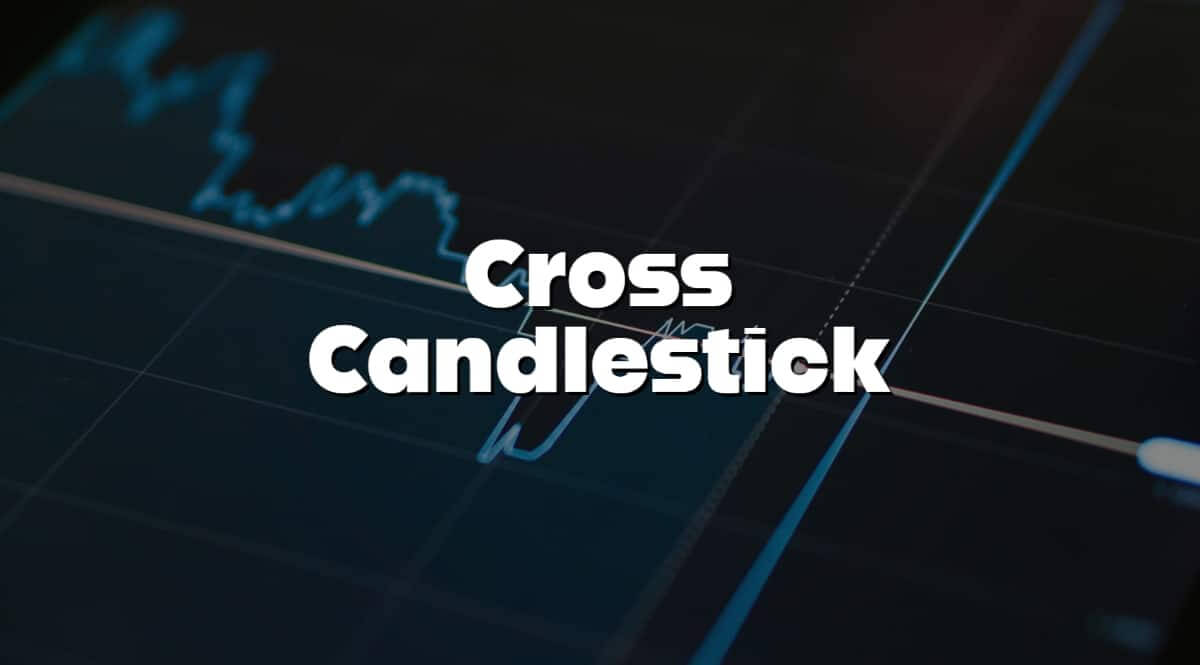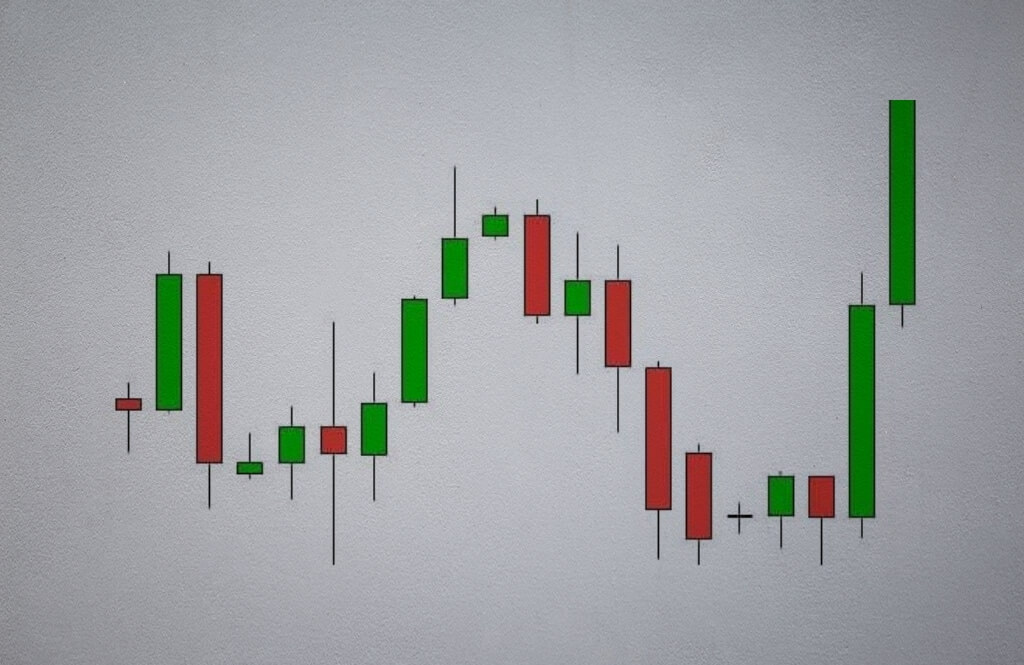
Cross Candlestick – forex trading explained step-by-step
Have you recently thought about what a Cross Candlestick is all about? Why is it essential as a motivated and ambitious Forex trader to learn all these patterns, charts, and strategies that could assist your career and lead you to higher profits?
First of all, dealing with Forex trading, in general, today is very demanding because everything happens on the largest financial market that works 24 hours, nearly five and a half days a week, and counts trillions of dollars.
Understanding how currency exchange works have reached the extent that every individual must seriously commit to it and be maximally informed about geopolitical events that directly affect price fluctuations, not only on the Forex market but also on the stock market.
However, understanding chart patterns such as cross candlestick patterns is integral to learning Forex and improving your career. So, in this article further, we’ll focus on the famous pattern; we’ll learn what the harami cross is all about, how technical analysis is done, and what the difference is between bullish reversal and bearish reversal. Let’s begin!
What is the Cross Candlestick all about?

Cross candlestick, also known as the harami cross, refers to a Japanese pattern that includes a huge candlestick and goes in a particular trend direction. The doji candlestick of a small body trails it. It’s crucial to note that this doji candlestick is entirely suppressed within the earlier candlestick’s body.
What does the harami cross pattern propose?
It’s crucial to understand that the harami, or cross candlestick pattern, proposes that the prior trend would reverse. Trend reversal means a change in the direction of a price. Another key thing to note regarding the harami cross pattern is that it could be:
- Bearish harami cross pattern
- Bullish harami cross pattern.
So, let’s learn more about these patterns, especially their differences, shall we?
What are bearish and bullish harami cross patterns?
As mentioned above, we have two kinds of harami cross candlestick patterns: bearish and bullish. The bullish harami cross candlestick pattern indicates a probable price reversal to the upside. On the other hand, the bearish harami cross pattern indicates the opposite way that the price reversal would go down.
How to understand the cross candlestick pattern the best?

Following a downtrend, a bullish harami cross pattern emerges. The initial candlestick portrays a substantial downward movement, often depicted as black or red, indicating the dominance of sellers.
The subsequent candlestick, known as a doji, exhibits a narrow range and opens above the previous day’s closing price. The doji candlestick concludes its trading session near its opening price. The doji must be fully encompassed within the preceding candlestick’s real body.
What does the presence of Doji suggest?
The presence of the doji suggests a sense of uncertainty among sellers. Typically, traders only take action based on this pattern if the price demonstrates a positive follow-through in the next few candlesticks.
This confirmation is necessary. Occasionally, the price may pause for a few candlesticks after the doji before continuing its ascent or descent. An upward movement beyond the opening price of the first candlestick further validates the potential for a price increase.
What shape does a bearish harami cross take?
Conversely, a bearish harami cross takes shape following an uptrend. The initial candlestick represents a significant upward movement, usually depicted as white or green, indicating buyers’ dominance.
This is succeeded by a doji, which signifies uncertainty on the part of buyers. Once again, the doji needs to be entirely contained within the real body of the preceding candlestick.
If the price goes below the next pattern, it will confirm it. The bearish pattern will be invalidated if the price remains unchanged, i.e., rising following the doji pattern.
How can you trade the Cross candlestick pattern?

Before anything, you should remember that it’s not mandatory to trade the harami cross candlestick pattern. Here is what it’s essential to know regarding the Cross candlestick pattern trading:
Bearish Reversal Patterns: Entry and Exit Strategies
Traders use bearish harami cross patterns as alerts for potential reversals. If long, profits may be taken when a bearish harami cross appears and the price drops. Similarly, a short position may be exited if a bullish harami cross appears and the price rises.
Place a stop loss below the doji low or the first candle’s low to enter a long position. Consider entering when the price surpasses the first candle’s opening. For a short position, set a stop loss above the dojo’s high or the first candle’s high. When the price drops below the first candle’s open, look for an entry.
Determining exit points is crucial. Traders can use trailing stop losses, Fibonacci extensions or retracements, or a risk/reward ratio.
Decoding White Soldiers in Candlestick Analysis
White soldiers, a vital pattern in Japanese candlestick analysis, reveal insights to technical analysts studying price action. These formations consist of consecutive bullish candles with opening prices below the previous candle’s close but closing prices surpassing it. White soldiers signify strong buyer presence, overpowering sellers and driving prices higher.
By examining opening and closing prices, analysts assess buyer strength and momentum. Higher closes and bullish opening prices indicate a continued upward trend. The size and range are relative to previous candles and provide insights into buyer dominance intensity. This analysis identifies buying opportunities and validates bullish trends.
Employing these patterns to interpret buyers and sellers
Technical analysts employ these patterns to interpret the buyer-seller battle. White soldiers’ price action showcases buyers’ determination, increasing prices and establishing dominance. Understanding this pattern alongside other indicators enables informed decision-making in navigating dynamic financial markets.
What are the famous Harami Cross Enhancers?

Traders await bullish confirmation through price action. Major support levels amplify the significance and potential for significant upward moves. Additional indicators, such as the relative strength index (RSI) rebounding from oversold territory, contribute to confirming the bullish price action.
Regarding bearish harami cross patterns, traders often prefer to observe a price decline before taking action. Moreover, it gains more significance if the pattern occurs near a major resistance level. Confirmation of the bearish price move can be reinforced by other technical indicators like the RSI dropping from overbought territory.
Bottom Line
The harami cross candlestick pattern, a key technical indicator, provides insights into future prices. It can signal potential reversals and trend shifts in the market. The morning star, a bullish confirmation, is formed when a small doji appears within the body of a larger bearish candle, indicating a potential upward move.
Conversely, a bearish harami cross, characterized by a small doji within the body of a larger bullish candle, may suggest a bearish engulfing and a potential downward move. Traders analyze the presence of upper shadows, white bodies, and market prices to make informed trading decisions based on these candlestick patterns.
Additionally, an inverted hammer candlestick within the harami cross pattern can confirm a potential reversal, as it signifies buying pressure and suggests a bullish sentiment in the market.




